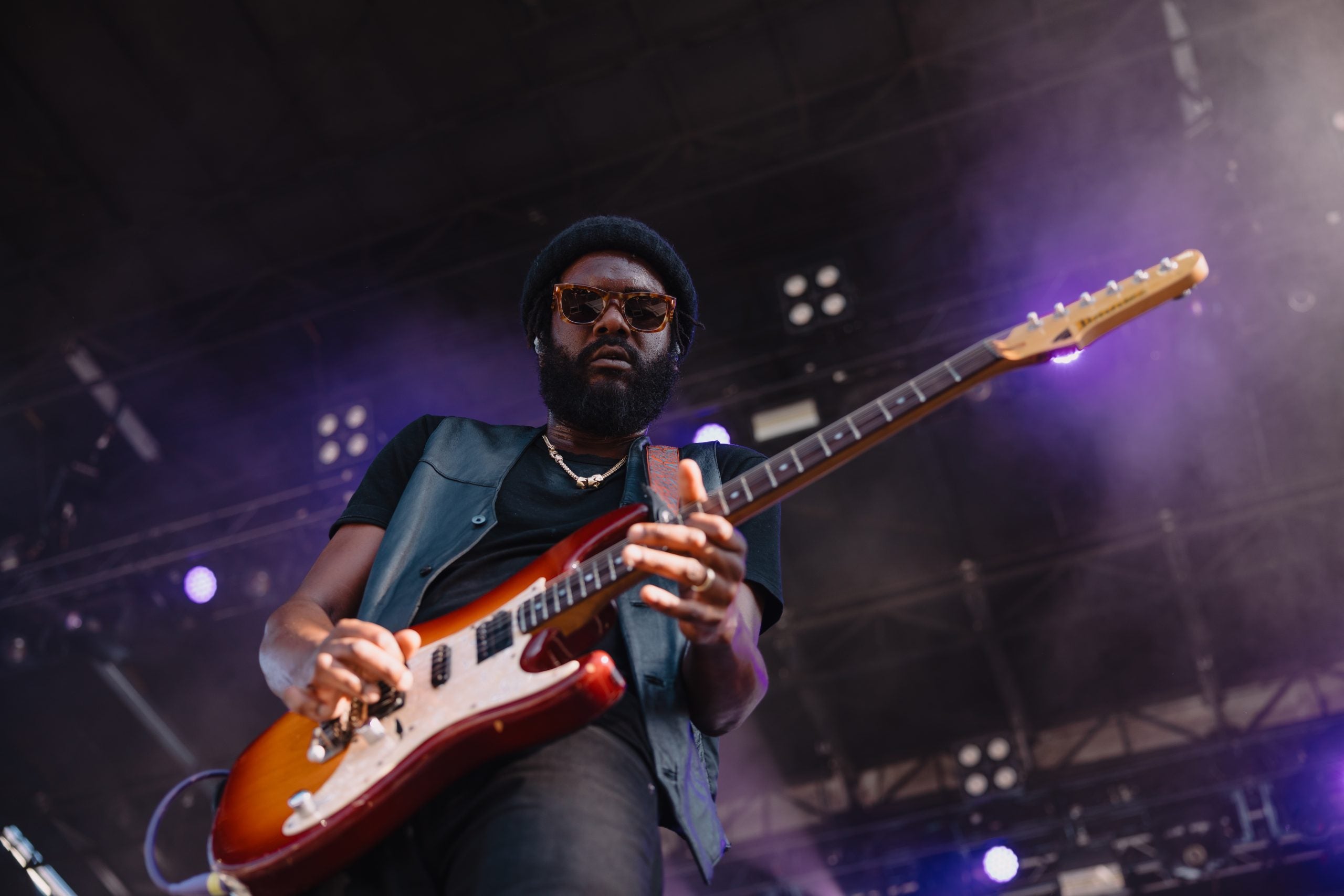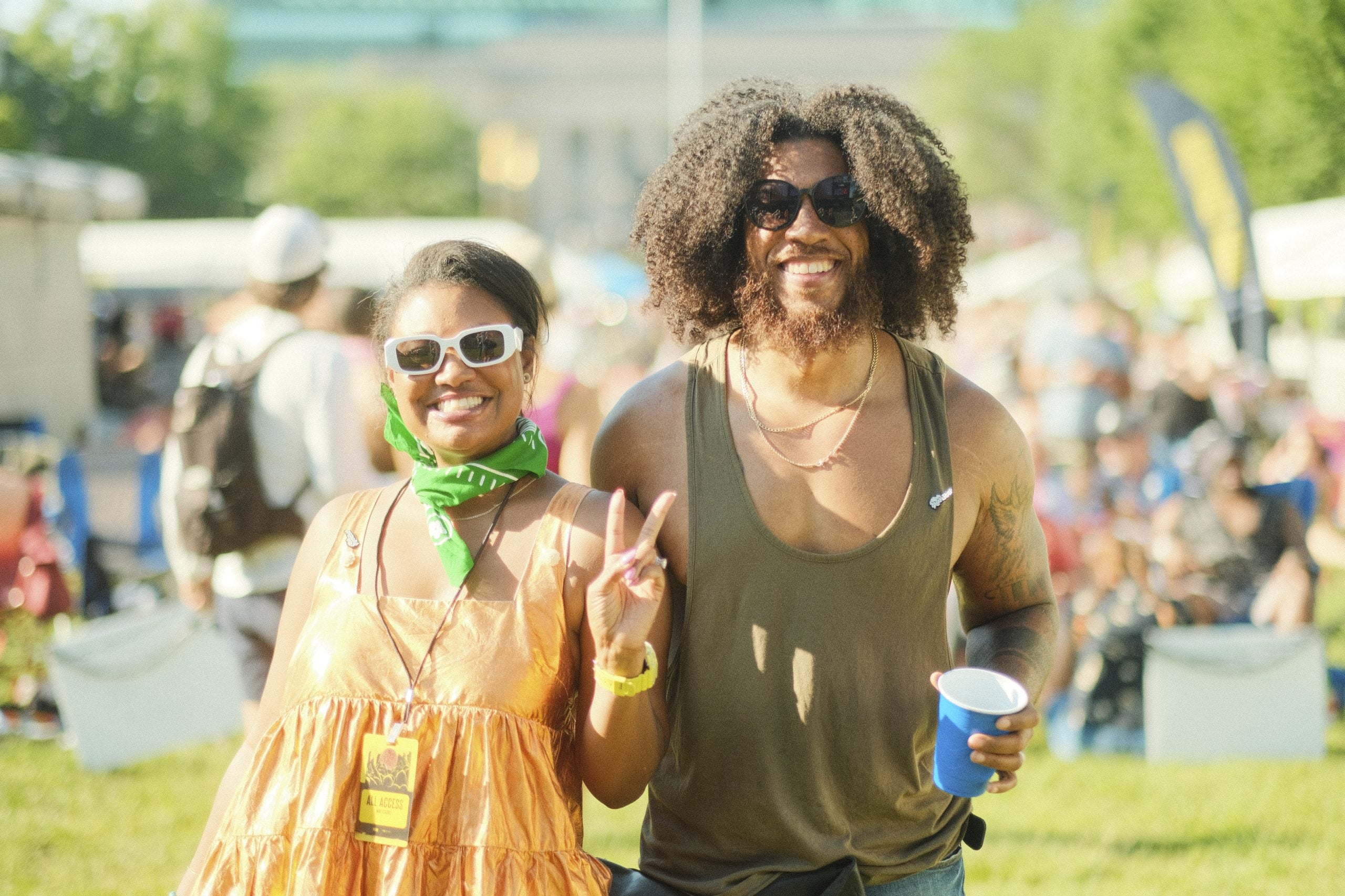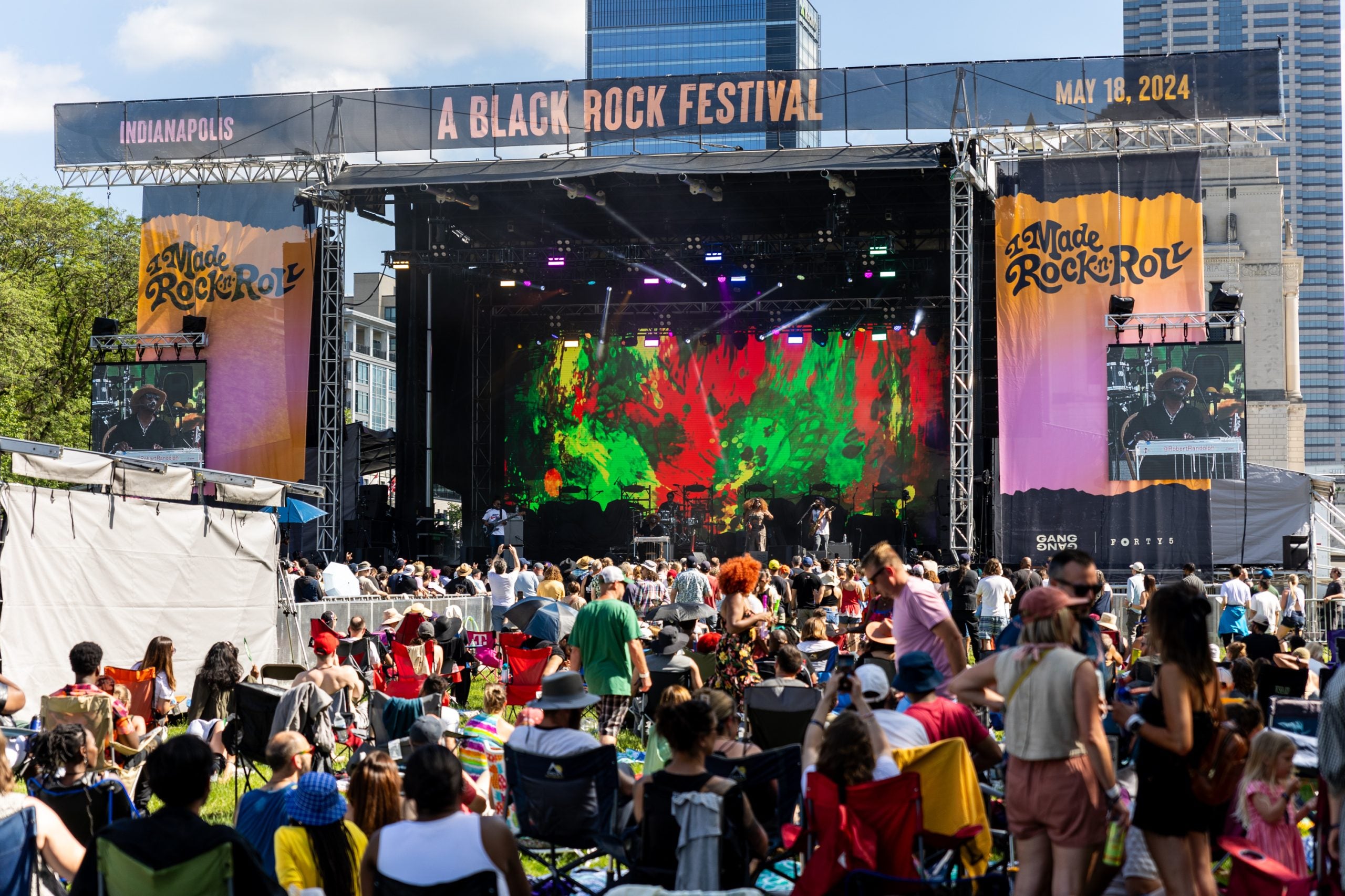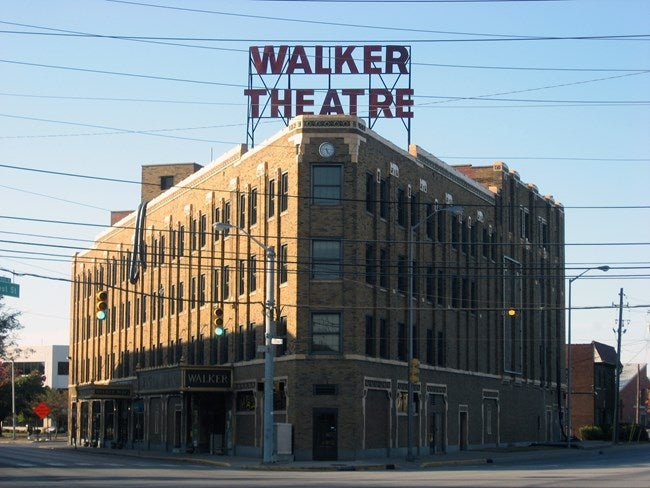
For over a century, the origin of Rock & Roll has been disputed by fans, critics, and historians alike. The sound derived from the rhythm and blues music of the 1940s, and within a decade would come to define an entire generation. On Saturday, May 18, thousands descended upon the American Legion Mall in Indianapolis, IN for the inaugural I Made Rock ‘N’ Roll Festival. Presented by GANGGANG and Forty5, an event aimed to highlight the impact of Black people on the genre of rock.
Featuring a diverse lineup of artists, the festival’s atmosphere beamed with positivity, set to the backdrop of Indy’s air. During I Made Rock ‘N’ Roll, attendees were able to enjoy performances from Inner Peace, Meet Me @ the Altar, Joy Oladokun, Robert Randolph, Gary Clark, Jr., and the evening’s headlining act, Grammy Award-nominated musician Janelle Monáe. Monáe, who is known for their unique creativity and artistry, spoke of the pivotal role that people of color have played in the foundation of Rock & Roll, and how continuing to push the envelope is critical to its progression.

“Our blackness is in the DNA of Rock & Roll, from gospel music to blues to folks like Sister Rosetta Tharpe to Jimi Hendrix to Little Richard to Jackie Shane,” Monáe tells ESSENCE. “Rock & Roll would not exist without us and we’re constantly redefining that. I always think rock and roll is a spirit. It’s more than just wearing a leather jacket or playing the hell out of a guitar. It’s the spirit of that person. And I see it in a lot of things, in a lot of people, and I’m honored to represent that.”
On the outside looking inward, the event’s development appeared seamless—but in actuality, it was years in the making. During a time of uncertainty for this country, the isolation of a global crisis sparked the impetus for the festival. While the initial idea was born from the world’s lack of connection, I Made Rock ‘N’ Roll evolved into something much larger.
“In 2020, in the moment in the world where everything was separate—from the race pandemic to the health pandemic—our thought was that if everything in 2020 was about what separates people, art and culture is what brings people together,” says Alan Bacon, Co-Founder and President of GANGGANG. “It was really just the idea of understanding the power of art. How do we center beauty, equity and culture within this sector, within this genre, within this platform to activate the creative economy? But at the same time, to put forth a message that’s needed, especially in this moment of time and history.”

History was prevalent all throughout the festival. From the murals that paid homage to Black Rock & Roll, to the local vendors selling appropriately-themed music and merchandise, guests were able to be both informed as well as entertained during their time at American Legion Mall. The story of Chuck Berry’s breakthrough record “Sweet Like Sixteen,” to Jimi Hendrix’s iconic performance at Woodstock occupied spaces for everyone to see. This timeline of greatness not only showcased what Black people have done for Rock, but for music as a whole.
“It’s culture as we know it today,” Gary Clark, Jr. says of the power of Black music. “I mean, it’s influenced the way people play instruments, the way they write songs, the way people dress, the way people speak. It’s in everything that we do. This culture is based on what people think is cool, and we’ve been cool for a long time.”
In staying true to their mission of creating equity within the arts, this historic event did just that. “I Made Rock ‘N’ Roll is simply another large visible experiment to show what GANGGANG does, which is to show the beauty and the truth,” says Melina Bacon, the firm’s Co-Founder and Executive Director. That truth, was debunking today’s narrow and exclusionary account of rock music, and showing the world just how Black the genre truly was.

Outside of the festival itself, it was the beauty of Indianapolis that shined through. With dozens of events happening within the area—The Indy 500, and the Pacers’ playoff series, among others—travelers from all over flocked to boutique hotels such as Bottleworks and The Alexander, where they were able to relax, and also get a taste of the city. Directly adjacent from the former is the Garage Food Hall and Pins Mechanical Co., the perfect option to have a great evening while enjoying some delicious food and even better drinks.
Although Indy in its entirety is a phenomenal place, the true soul of the city lies along the legendary strip of Indiana Avenue. The avenue was a thriving, widely-known neighborhood of theaters, jazz clubs, stores, offices, and residences in the late-1800s. It also became the site of the Madam C.J. Walker Building, which served as the headquarters for Walker‘s company, as well as an entertainment, business, and commercial hub for the city’s Black community from the 1920s to the 1950s. Now, it stands as a testament to the ingenuity of African Americans, and a symbol of the city’s rich history.

“The spirit of Indiana Avenue is still what’s driving us today,” Melina explains. “We get to integrate our local bands, we get to hire hundreds of people, we get to make jobs for the creative economy in Indianapolis. And Indianapolis has a huge creative asset body. And that’s not kind of a common narrative that you hear coming from Indiana or about Indiana.”
“And I think as it relates to just our history, the descendants of these greats on Indiana Avenue are still alive,” she continues. “We’re literally still here. So it’s just not the spirit that is alive and well; it is also just the people that are alive and well that are looking to continue to push this narrative forward.”







